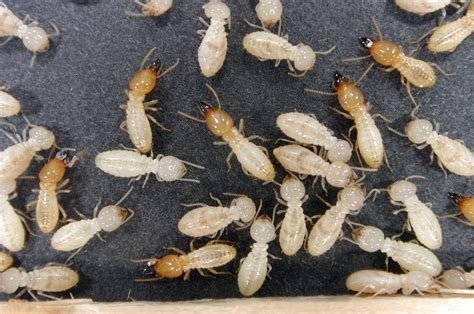TERMITE CONTROL AND INSPECTIONS



Did you know?
• Termites on earth outweigh humans on earth.
• Termites work 24 hours a day; they do not sleep.
• A mature colony of Formosan termites can number in the millions and eat 13 ounces of wood per day. (2017. Termidor Home)
• In residential areas where termite pressure is high, research showed an average of 25 colonies per acre, with a maximum of 75 colonies per acre.
• When one termite colony is eliminated from an area, another colony often moves in to fill the vacated niche.
Warning signs of infestation:
The best way to determine if termites are in your home is with a thorough inspection from a pest management professional. Unfortunately, termites don’t always leave apparent warning signs, but here are a few to be aware of:
• Visible termite swarms during the day or early evening, often after rainfall
• Termites or termite wings on window sills or along walls
• Shelter tubes or mud tubes appearing around the foundation
• Baseboards and floors that sound hollow or sag
• Evidence of termite damage to wood in or around windows and door frames
1. Parman, V. and Vargo, E.L. 2008. Journal of Economic Entomology 2. Thoms, E.M., et. al. 2009. American Entomologist
ARE THOSE TERMITES OR ANTS?
Those flying ants outside your home may be termites. These insects look very similar to termites, but you can tell the difference by checking the size of the wings. Termites have two pairs of same-sized wings, while ants have a smaller set of lower wings. Straight Termite Antennae vs. Ants Elbowed Antennae . Termite have a thicker, less defined waist. Ants have very pronounced, pinched body parts.
DO YOU HAVE AN INFESTATION?
Look for the following to determine if you have an infestation that should be treated:
Piles of wings that were shed by termites during the swarming cycle
Mud tubes around the outside or inside of your home
Hollow-sounding wood or obvious damage to wood or drywall
Mud spots on walls, ceilings, or window sills
Visible tunnels beneath paint or wallpaper.
Our three main methods of termite control:
Chemical Barrier. A chemical barrier is placed along the foundation of the building at a rate of 4 gallons per 10 linear feet. If the home has a brick veneer (meaning the brick goes well into the ground) then an additional 2 gallons per 10 linear feet MUST be applied to the exterior wall void. Termidor SC/Taurus SC both utilize fipronil, a non repellent termiticide that has proven results. It is the NUMBER ONE product on the market today as far as liquid termitcides are concerned. Colony collapse within 3 months and it has residual strength to allow it to work for the next few years to come.
Bait Stations. Termites have a natural ability to randomly forge. They are born blind and with no sense of smell. Termite workers randomly forge until they find a food source. Once found the workers leave a pheromone trail for the rest of the colony and they begin consuming their new food source. Bait stations take advantage of the random forging of termites and are often hit well before the house they are meant to protect! Through feeding, the colony gets a lethal dose of termiticide and it’s lights out for them. By far, baiting systems are THE MOST HANDS ON termite control. Well worth your consideration.
A Mix of Both. No two houses are completely the same, so the same goes for termite treatments. Sometimes a combo of both techniques are used to provide the very best protection.
Call us today for a FREE inspection and estimate for your termite services!
228-493-8700
Further protect your home and business with regularly scheduled pest control measures monthly, every other month, or quarterly.
Formosan Termites
Credit to BASF








